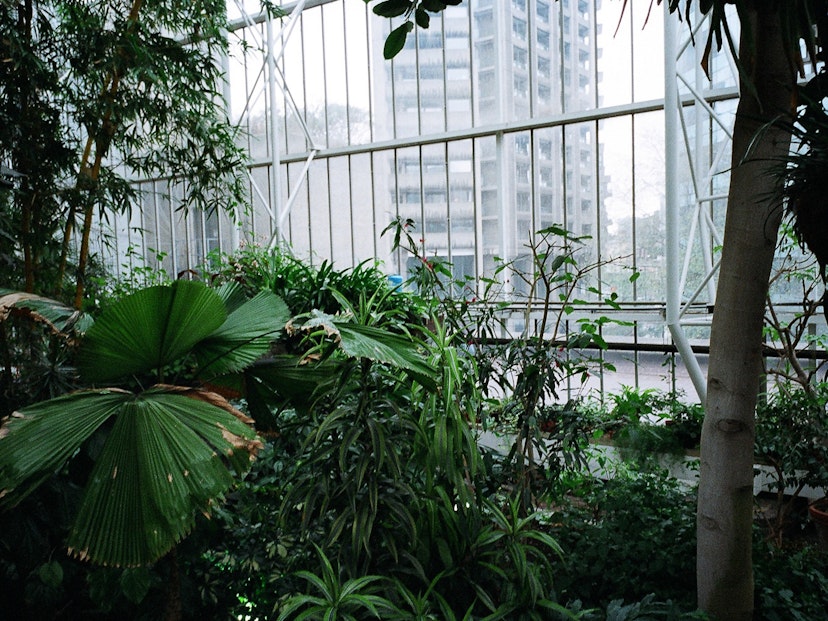Shop
Occasion
Same day delivery
Want to sell on Floom?
Shop
Occasion
Same day delivery
Want to sell on Floom?

The Best Of The Chelsea Flower Show
Culture
Most people attending this year’s Chelsea will struggle not to notice the abundance and progression of naturalistic plantings. Referring to his own design for the Telegraph Garden, Andy Sturgeon referred to it as “a captured landscape” and this same phrase could be adapted to more than a handful of other gardens. The association with Dan Pearson’s re-imagining of the Trout Stream at Chatsworth, which won ‘Best in Show’ in 2015, is clear; ‘big stone’ has already become one of this year’s catchphrases. There is something basic - almost caveman-like - in these designers who haul their monoliths around such restrictively small sites. The recreation of landscape is problematic at a garden show but I found myself enchanted. Derivative some may be but the effect of these gardens is impressive and in some cases transportative.
Below are four gardens at the front edge of this trend. Within this proliferation of rugged landscapes however, a niche has been carved out for something quieter, less ambitious and arguably more conventional. A garden that is comfortable with being a garden.
1 Hugo Bugg (Royal Bank of Canada)

Since winning gold last year, Hugo Bugg has taken ownership of the master plan for the new Jordanian Botanic Garden and has created a show garden to reflect the beauty of Jordan’s deserts. The harsh geology of this landscape is represented by large, broad-based pyramids of knapped black stone which mark a startling contrast to the softness of the planting, both in colour and texture. Helped by master grower Marina Christopher, Hugo has used red poppies, blue lupins and white crambe woven through meadows of Foxtail Barley (Hordeum jubatum) beneath a sparse canopy of pines.
2 Andy Sturgeon (The Telegraph)

A Chelsea veteran, Andy has attempted what is possibly the most ambitious of this year’s show gardens. Cavernous excavations create a meltwater stream that stretches out and away from the visitor. An expert use of textural contrast with brushed metal fins and polished stone against rough cut boulders, all of mammoth scale, creates great drama in a deceptively small space.
3 Cleve West (M&G Investments)

Returning to a landscape a bit closer to home, the wilds of Exmoor provided Cleve with the inspiration for this year’s M&G Garden. Twice winner of Best in Show, this show garden is unsurprisingly immaculate in both its execution and its design. Beneath characterful bilberry bushes and downy oaks lies a delicate mixture of perennials and woodland grasses, such as wood melic (Melica uniflora), that blend beautifully. Whereas Andy Sturgeon used ‘big stone’ for dramatic contrast here the sandstone seems to fade in and out of the planting, its hard form broken by dappled shade. Though certainly the most reminiscent of Dan Pearson’s 2015 offering, this garden is undeniably beautiful.
4 James Basson (L’Occitane)

Of all these gardens James’ efforts is the one that sings most clearly of a specific landscape. It is in fact a fragment of a landscape. It will split opinion in its coarseness: dead grass is the most prevalent feature of its planting. Inspired by the ramshackle hillsides of Haute Provenance this garden is a masterclass in restraint that evokes the atmosphere of a particular place. Carefully placed gladiolus and hare bells provide pinpricks of rich colour among the browns and dirty white of crumbling dry stone walls and a dusty river bed. It is a challenging garden but one that has impressive power to transport the viewer.
5 Jekka McVicar (St. John’s Hospice)

In stark contrast to the previous gardens here is a designer who is attempting to be nothing more than herself, presenting a garden that is nothing more than a garden and all the more magical as a result. A simple geometrical design with a circular herbaceous border, two benches, a sculpture and a fountain set with yew hedges and espalier fruit trees. No changes in levels or unusual plants and certainly no big stone. Its conventionality refreshingly bucks the trends seen elsewhere. This is the first show garden of a woman who has won seventeen golds at Chelsea for her Marquee displays of herbs, and her plantsmanship shines through in the quality of the plants. Equally refreshing is the fact that this garden will go on to live a second life: whereas most Chelsea gardens are dismantled and discarded, this one will be reconstructed at St. John’s Hospice so that its tranquillity might be enjoyed by patients there.
The Writer: Jonny Bruce - Originally from Oxford Jonny is the current Christopher Lloyd Scholar at Great Dixter in East Sussex. He began gardening at university where he founded Girton College's first student allotment. Since graduating Jonny has worked in various public gardens and continues to explore the relationship between art, horticulture and the natural world in his writing and edits a small publication entitled The Germ.




